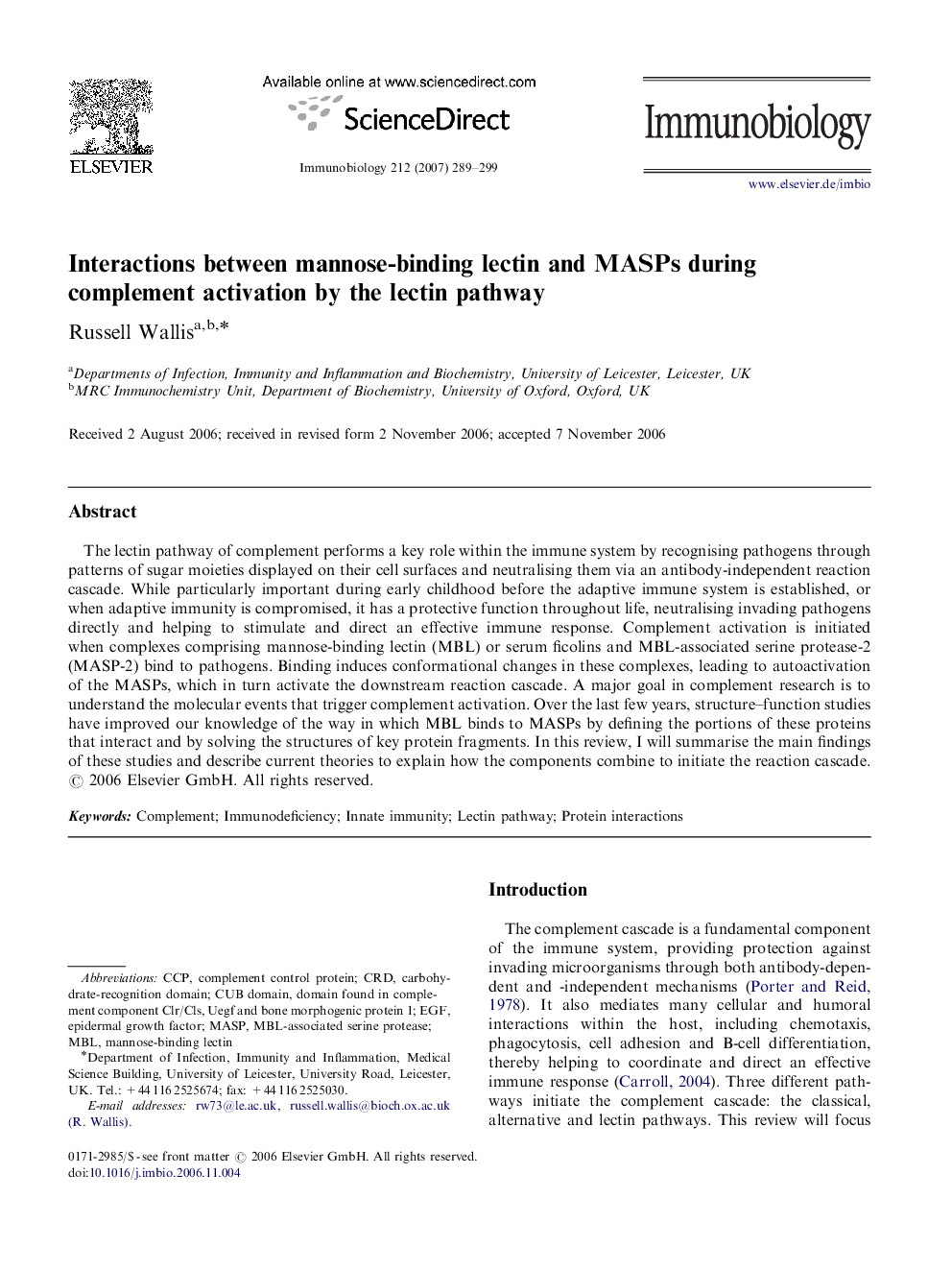| Article ID | Journal | Published Year | Pages | File Type |
|---|---|---|---|---|
| 8472159 | Immunobiology | 2007 | 11 Pages |
Abstract
The lectin pathway of complement performs a key role within the immune system by recognising pathogens through patterns of sugar moieties displayed on their cell surfaces and neutralising them via an antibody-independent reaction cascade. While particularly important during early childhood before the adaptive immune system is established, or when adaptive immunity is compromised, it has a protective function throughout life, neutralising invading pathogens directly and helping to stimulate and direct an effective immune response. Complement activation is initiated when complexes comprising mannose-binding lectin (MBL) or serum ficolins and MBL-associated serine protease-2 (MASP-2) bind to pathogens. Binding induces conformational changes in these complexes, leading to autoactivation of the MASPs, which in turn activate the downstream reaction cascade. A major goal in complement research is to understand the molecular events that trigger complement activation. Over the last few years, structure-function studies have improved our knowledge of the way in which MBL binds to MASPs by defining the portions of these proteins that interact and by solving the structures of key protein fragments. In this review, I will summarise the main findings of these studies and describe current theories to explain how the components combine to initiate the reaction cascade.
Keywords
Related Topics
Life Sciences
Biochemistry, Genetics and Molecular Biology
Cell Biology
Authors
Russell Wallis,
